The young women activists leading Standing Rock to victory
- Text by Jessica Holland
- Photography by Annabelle Marcovici

Lauren Howland’s wrist was already bandaged up – broken, she thinks, by cops hitting her with batons – when she headed back to the front lines of the #NODAPL struggle a few days before Halloween.
The 21-year-old, a member of the Jicarilla Apache Nation in New Mexico, had been camping at Standing Rock since early August 2016, with thousands of others gathered in opposition to the Dakota Access oil pipeline (DAPL) and the threat it poses to the reservation’s water supply. A prayer march to sacred sites destroyed by pipeline construction the previous Saturday had been shut down by police, who surrounded the group as Lauren tried to get a young boy out of danger.
“I was trying to plead with the cops to let him go,” she remembers. “He was so scared for his life. All the guns were pointing at us. There was mace, there were riot shields and batons, and hundreds of police and armoured vehicles. I tried to get him out of there, and the police didn’t like it.” She says they started hitting her head and hands as she tried to protect herself. She was pulled back into the crowd by friends, and managed to escape, but others were charged with crimes including rioting, trespassing and resisting arrest.

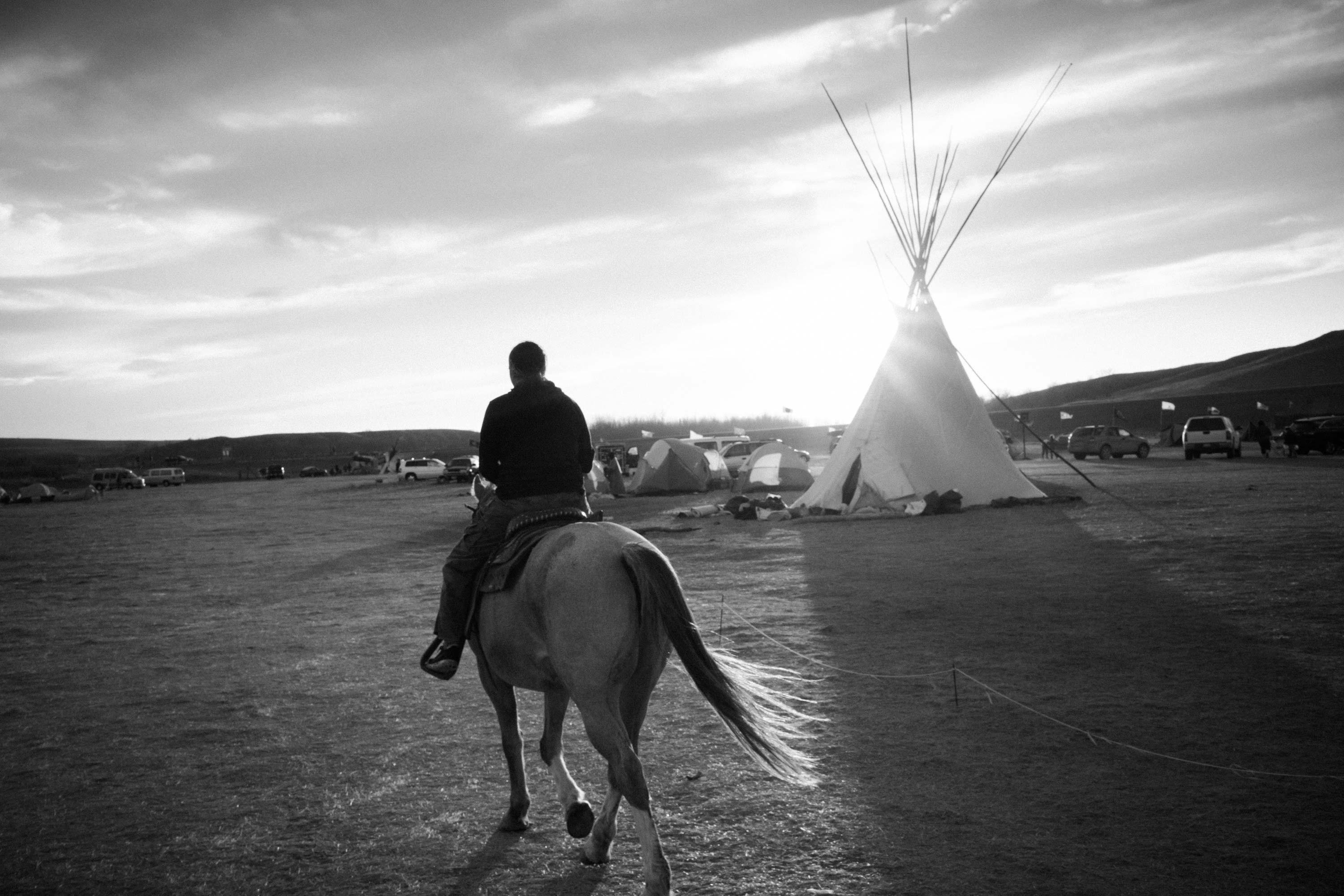
Despite the fact that the company overseeing DAPL, Energy Transfer Partners, lacked the necessary permit to drill under Lake Oahe, and despite government departments requesting that they voluntarily halt construction in September, building continued as close to the water as workers could get. When Lauren returned to the frontline, a group had decided to physically block the pipeline route. All the long-term encampments at Standing Rock are on tribal-owned or -leased land. But these ‘protectors’ (not ‘protestors’, as most people here insist) set up camp on a disputed piece of land – a site recently bought by DAPL that, according to a treaty signed by the government in 1851, belonged to the Great Sioux Nation. In the intervening decades, the land had been taken back without being formally ceded by the Sioux, who were ancestors of the current Standing Rock Sioux Nation.
The police gave the protectors a deadline to clear the site, and when it passed, they moved in with hundreds of officers in riot gear, armoured cars and two helicopters. They blasted sound cannons and pepper spray, fired rubber bullets and beanbag rounds, set off concussion grenades and hit one man in the face with a taser barb. On the protesters’ side, there were war cries and chanted prayers, as riders towered over the crowd on horseback, with red bandanas across their faces. Three people locked themselves to a truck and a blockade was set on fire, creating billowing towers of black smoke. “The first thing the cops grabbed was my hand, twisting it up,” Lauren says. Although she was able to free herself, at least another 117 protectors were taken to jails as far afield as Fargo, four hours’ drive away.
Lauren is explaining all this the following day, as the people gathering at Standing Rock catch their breath, crowdsource bail money and discuss next steps. It’s a team that includes members of Native American tribes across the continent and indigenous groups across the world, as well as labour union delegations, Black Lives Matter organisers, environmental activists, anti-capitalists, anti-frackers, former military servicemen and some who have never set foot at a political demonstration before.

Jasilyn Charger, front.
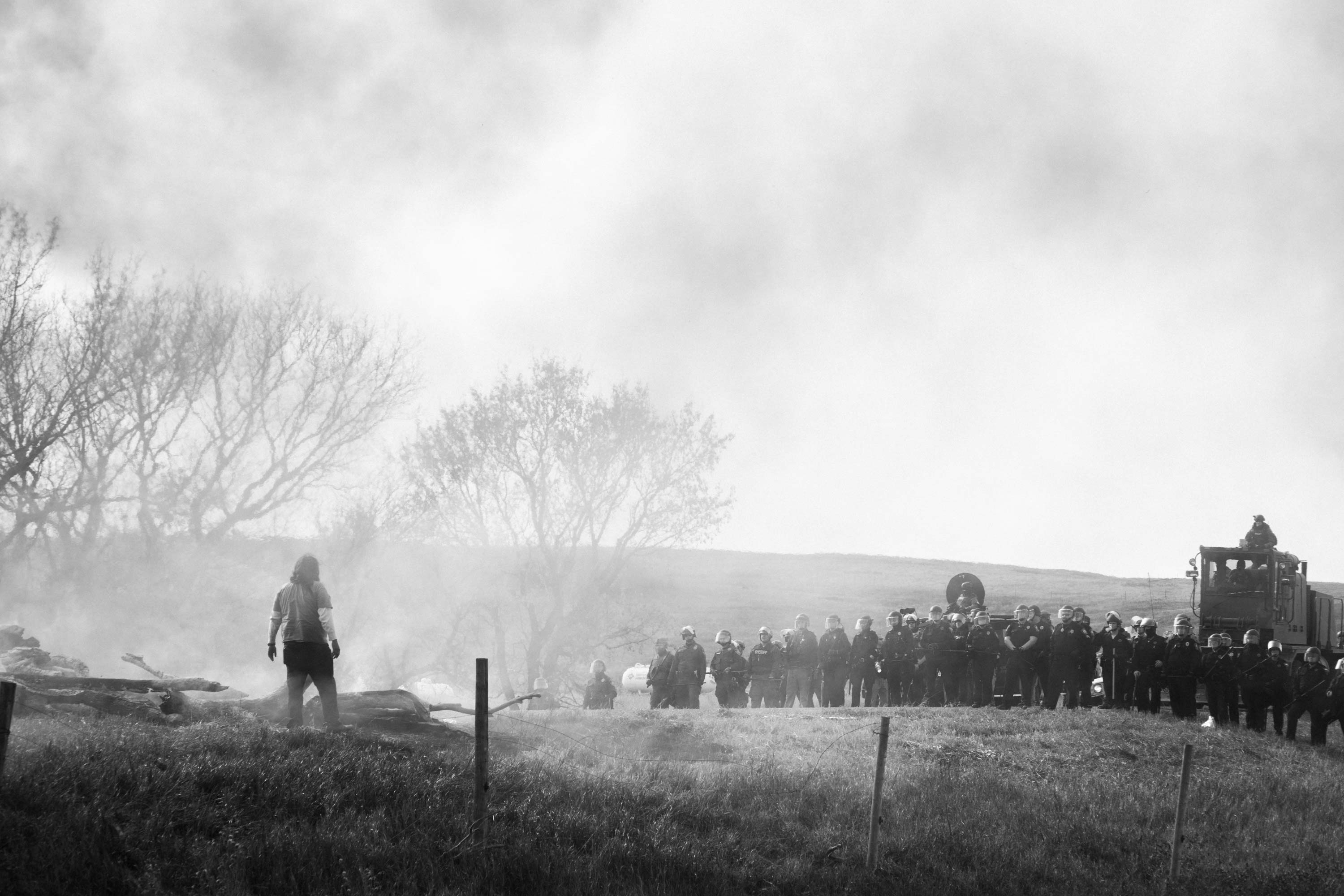
As Lauren and her friend Jasilyn Charger walk back along the river from the biggest encampment, Oceti Sakowin, everyone’s exhausted from all the burned-off adrenaline, tension, fear and anger. They were at a prayer gathering, Jasilyn says, that was “exactly what we needed” after the confrontation the day before. It’s another bright, cold day and the two are still smiling. “No matter what they do to us, no matter how many times they mace us,” Lauren says, “I still pray for them, and love them. We’re fighting the pipeline, not the police.”
Jasilyn, who’s 20, isn’t new to community organising. A member of the nearby Cheyenne River Sioux Nation, she has been working to combat a youth suicide epidemic that has devastated her community, and has been active in the fight against the Keystone XL pipeline – another construction slated to run across the Cheyenne River close to reservation lands before being scrapped in November 2015. Jasilyn responded to the very first call out from the Standing Rock Sioux, asking other tribal communities for help opposing DAPL, back in April, and set up camp when there was just a handful of protectors here. Over the summer, she took part in a relay run from Dakota to Washington, D.C. to deliver an anti-pipeline petition to the Army Corps of Engineers.
But by August, Jasilyn became frustrated. Feeling that young people were being excluded from decisions at the camp, she formed an organisation now known as the International Indigenous Youth Council. Lauren was one of those present at the first meeting.
“We really needed a voice,” Jasilyn says. “The future needs to speak for itself. We need to stand together as a generation and really unite, because adults are going to destroy our future before we even have one.”
She says that she’s fighting for the children she wants to have someday, who can’t yet speak for themselves, and that being a woman gives her added determination in the struggle.
“We’re fragile but we’re strong,” she adds. “We have a great connection with the Earth because we can empathise with having things forced on us. We know how it feels not having a voice. The women here, they’re at the front-lines. There are more women warriors than there are men here. And it’s because we feel her pain. We know women all over the country who know how it feels to be raped.
That’s what they’re doing to the land, and we’re not going to stand for it. We can’t leave it in the hands of men. We can’t leave it in the hands of adults. We have to do this ourselves.”
Youth council members are helping out around the camp, organising prayer gatherings and apprenticing themselves with medics and legal teams. The plan is to “take those skills we learned here back into our own communities”, Jasilyn says. “We’re training ourselves to be leaders.”
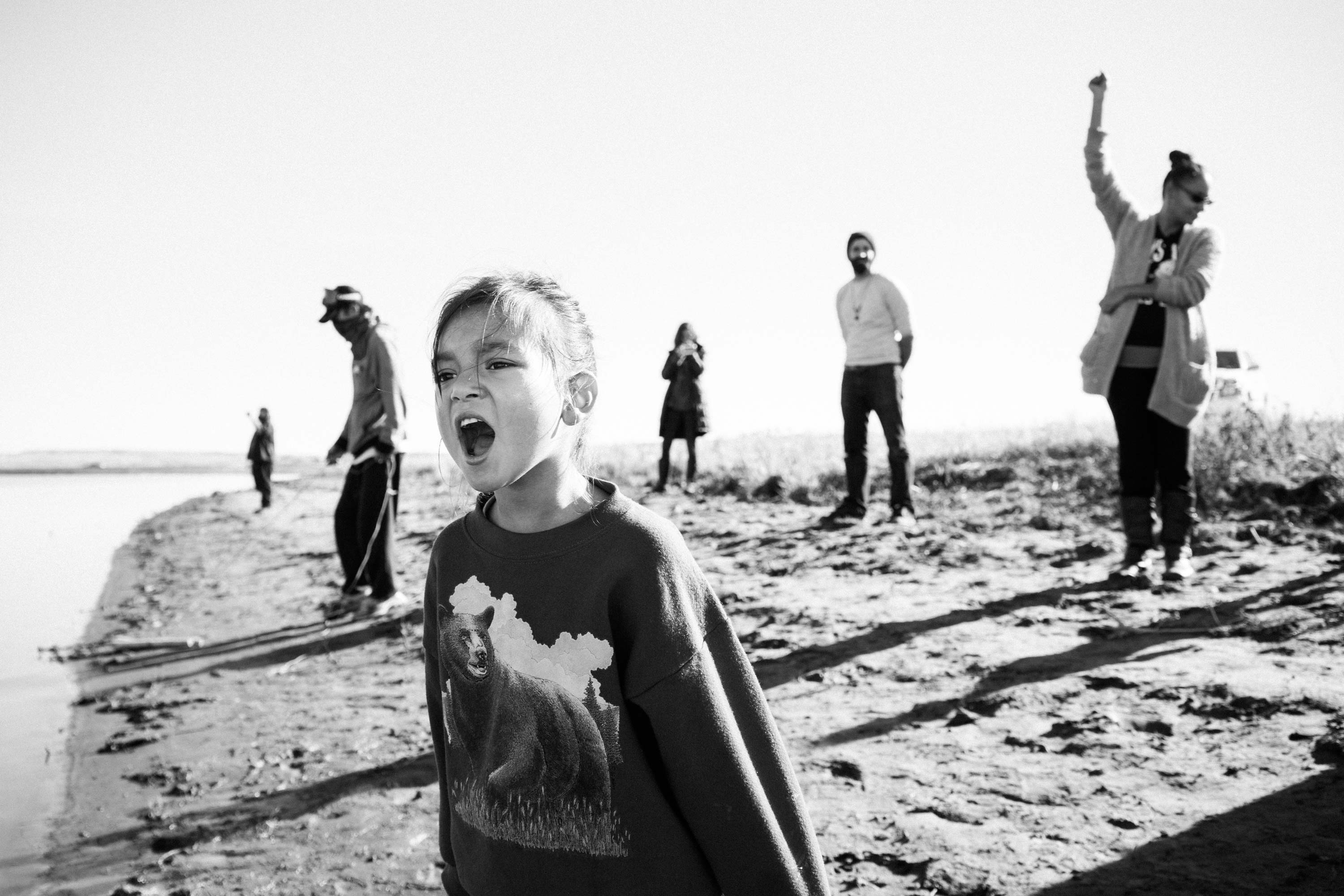
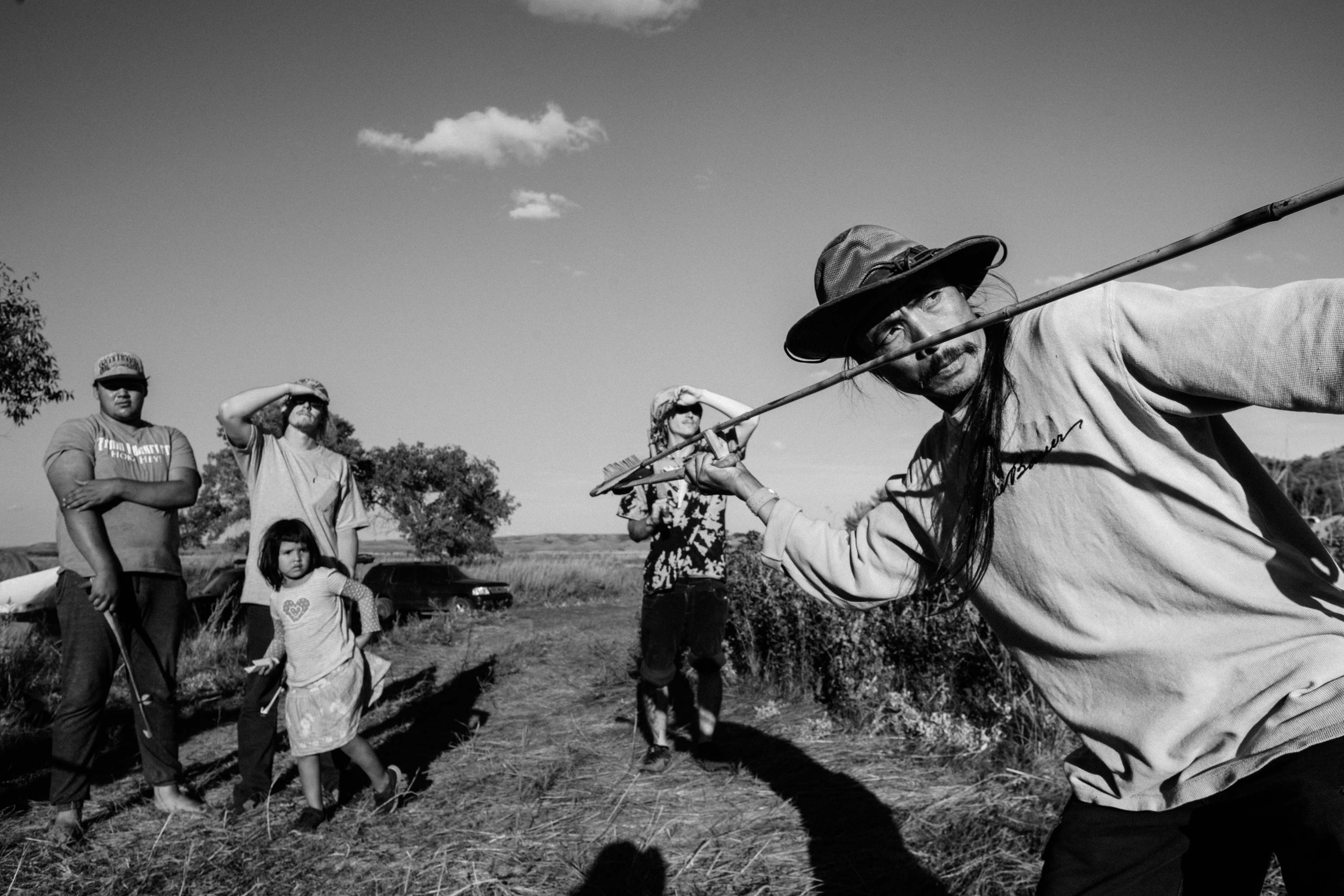
The $3.7 billion Dakota Access Pipeline is intended to transport half a million barrels of crude oil each day from the Bakken Formation area in North Dakota to a depot in Illinois. Those supporting it argue that the new infrastructure will create jobs and decrease dependence on foreign oil, and they insist that pipes are deeply buried and strong enough to stay intact. Those against it point to the fact that DAPL’s future operator, Sunoco Logistics, has the worst safety record among its competitors in the country, with more than 200 leaks since 2010, according to government data. As recently as 21 October, a Sunoco pipeline broke in Pennsylvania, spilling about 55,000 gallons of gasoline into the Susquehanna River, and residents living nearby were advised to reduce their water use.
The DAPL route doesn’t cross the current borders of the Standing Rock Reservation, but it does run under the Missouri at the Lake Oahe reservoir, a half-mile from the reservation boundary. The lake was created by the US Army Corps of Engineers half a century ago by damming the Missouri and flooding the land of the Standing Rock and Cheyenne River Sioux, and it’s the Army Corps who have jurisdiction over this contested land now. In mid-November, they announced that further consultation was needed before Energy Transfer Partners are granted permission to complete the pipeline.
In early November, President Obama talked about a possible reroute of DAPL, but it’s likely that President Trump will be less sympathetic. He has between half a million and a million dollars invested in Energy Transfer Partners, a similar amount invested in a company that will own 25 per cent of the completed infrastructure, and has received more than $100,000 in campaign donations from ETP’s chief executive. He has also pledged to revive Keystone XL, called climate change a hoax, and accused Native Americans of faking their ancestry when trying to shut down Indian casinos that competed with his own.
“Look at it this way,” posted Indigenous Environmental Network organiser Kandi Mossett on Facebook the day after Trump’s election, “we know exactly what we’re dealing with.” She said that the result laid bare “what this country is made up of and what it was founded on,” adding that it erased any false hope. “Now, more than ever, we have to come together.”
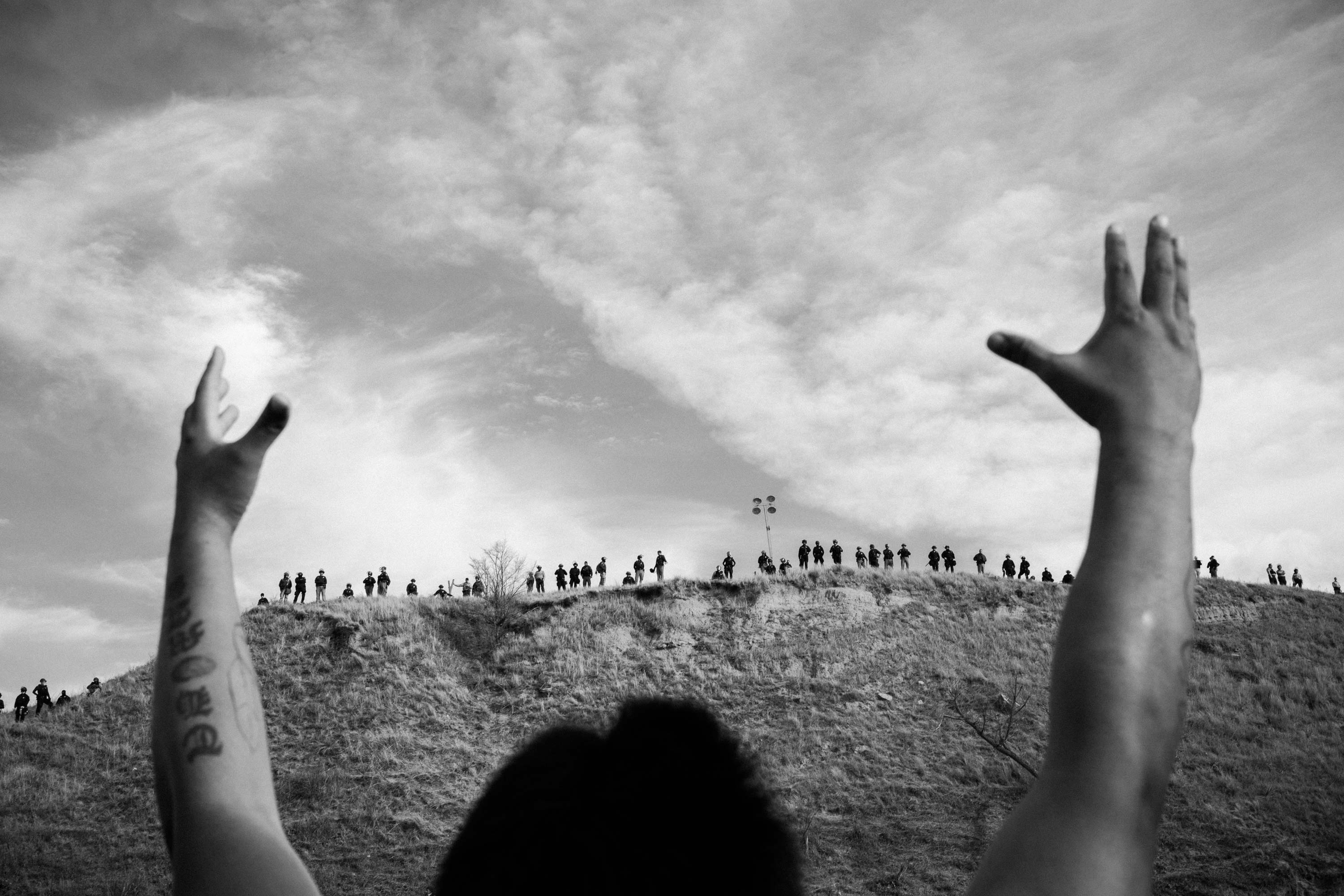
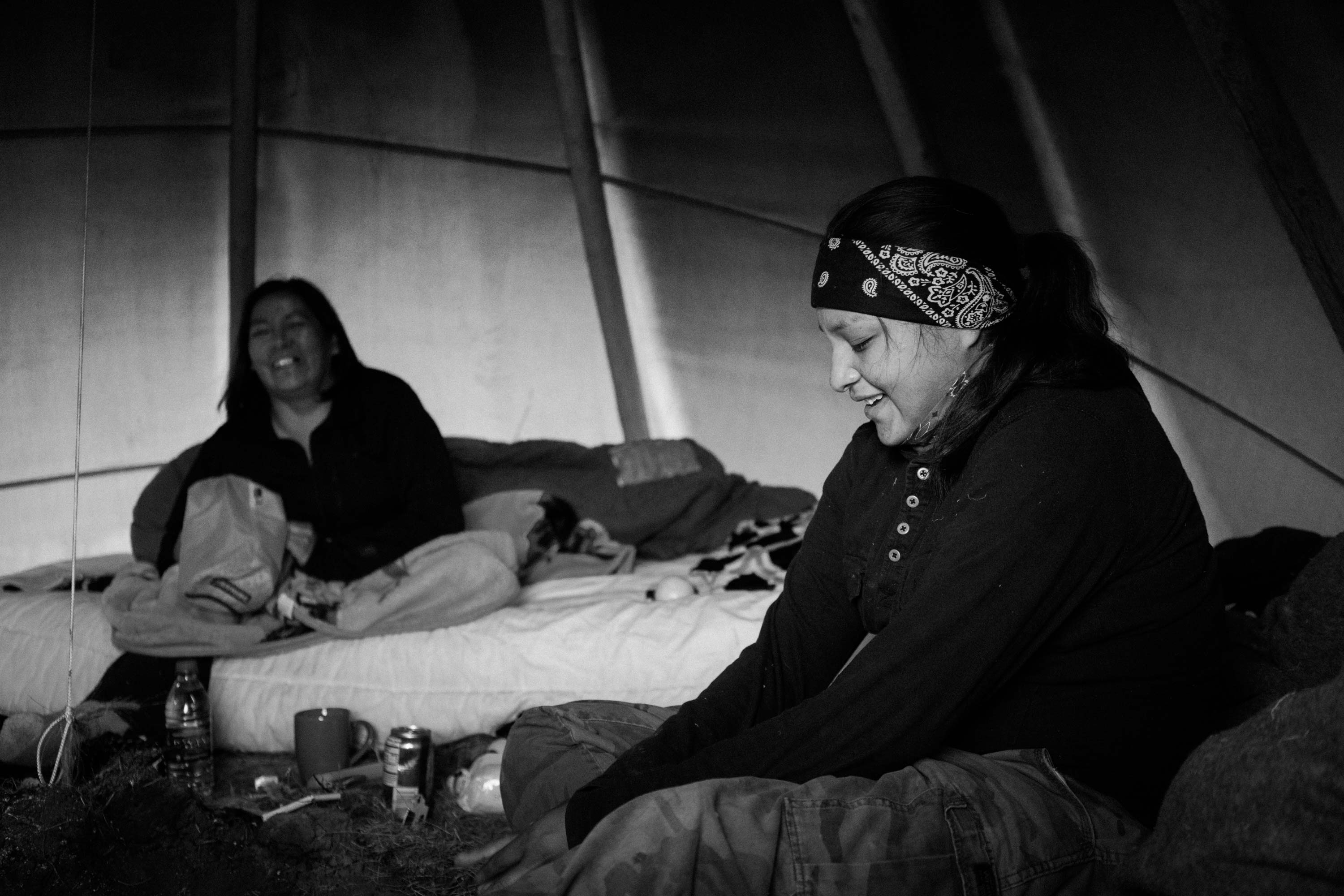
“Mni wiconi” – “Water is life” – is the rallying cry at Standing Rock. But there’s more at stake for many of the protectors than the threat of contaminated reservoirs, or even the continued burning of fossil fuels on a warming planet. Set what’s happening in the context of mass killings, land grabs and broken treaties forced on indigenous communities by the US government over centuries, and it’s possible to see the pipeline as the latest in a long line of attacks on Native American survival. Protectors say that sacred sites have already been bulldozed in the DAPL construction process, that people were dragged out of religious ceremonies to be arrested, and that there was a failure to properly consult tribal elders as leaders of sovereign nations.
“It’s historical colonial violence that we’re experiencing,” says Remy, an artist, graphic designer and member of direct action training collective The Indian Problem. Remy is camped at Oceti Sakowin and prefers to withhold his full name. He grew up on a Navajo reservation in Arizona about five miles from Black Mesa, which he describes as “one of the largest, most dangerous strip mining operations in the world.” The reservation, he says, was surrounded by seven coal-fired plants (of which six persist today) that have been linked to birth defects and asthma among the local population, who are still living in houses with no electricity or running water. “There’s no way that would happen anywhere else than in an indigenous community or some other people-of-colour community,” he says.
Statistics bear this out. The Center for Effective Government has found that black and Latino communities in the US are twice as likely to live near chemical facilities and industrial pollution sites as white communities, and as Joye Braun of the IEN points out, “extractive industries traditionally target indigenous populations.”
Originally, the proposed DAPL route crossed the Missouri about 10 miles upstream of the state capital of Bismarck, but the plan was rejected by the Army Corps for reasons that included the risk to the municipal water supply. When the Reverend Jesse Jackson visited Standing Rock in late October, he described the current situation as “the ripest case of environmental racism I’ve seen in a long time.”
For Remy, this is part of what it means to grow up in a Native American community. White Americans may learn about the genocide in their country’s history, but here, the sense is that the genocide never ended. “There’s no other race that’s been killed more than indigenous people,” Remy says. “While black males get killed more frequently, per capita we’re killed more by police.”
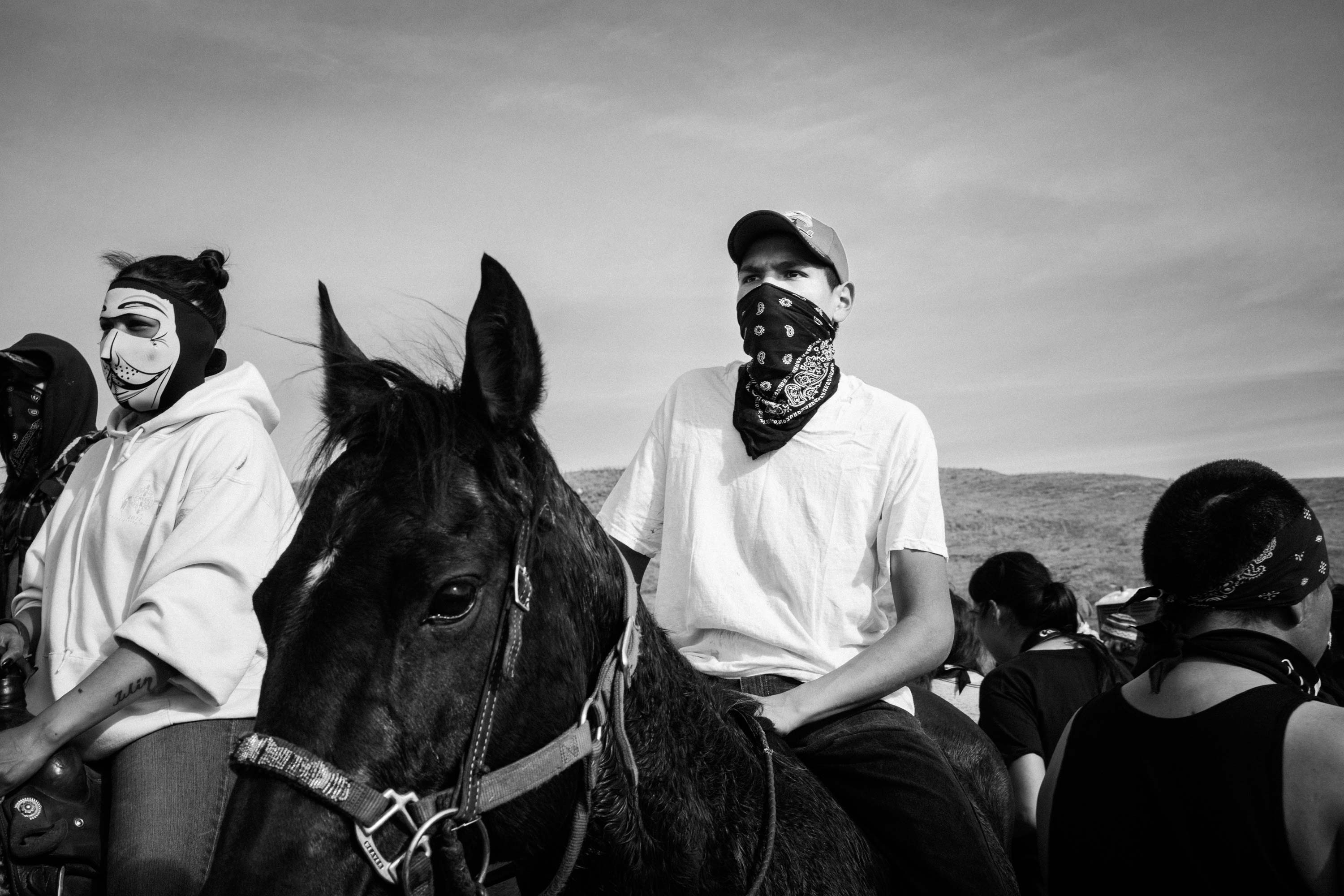
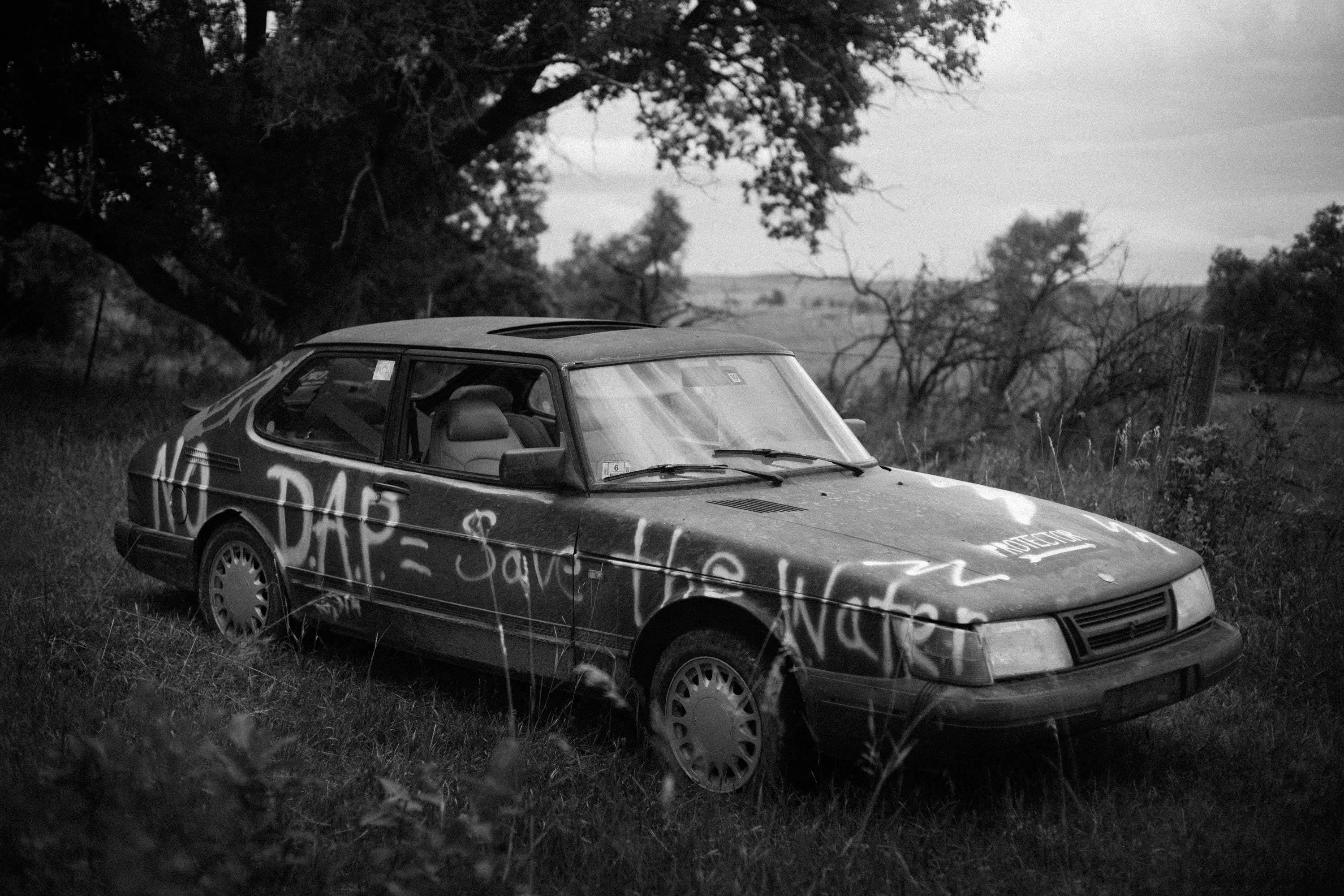
“That’s why we fight so freaking hard,” Jasilyn says. She sees the fight against DAPL as part of a larger struggle to uplift indigenous communities across the continent. “My people were nomadic, they didn’t come from here, this whole land was our home,” she says. “The government put us here. We see the reservations as prisoner-of-war camps. We’re still prisoners of war. We still carry that trauma. Each child on our reservation is born with PTSD.”
On Jasilyn’s home reservation, 32 children between the ages of 12 and 19 committed suicide in a recent three-month period, she says. “We’re fighting for our very lives. We don’t want to die anymore. We don’t want to do meth just to feel happy. We want to live in peace. We want to go back to our heritage. We don’t want to be sad anymore, because it’s killing us.”
Against this backdrop, the gathering of people from more than 300 Native American tribes at Standing Rock offers an opportunity for communal cultural and spiritual celebration, as well as defiance. Three times a day, the encampments gather for meals around a constantly burning sacred fire, with offerings made to the Creator, and elders and children served first. Traditions from across the continent are shared, and there are displays of horsemanship, regular sweat lodge ceremonies, singing and prayers. “We’re decolonising,” Jasilyn says. “We’re finding out who we are again.”
Linda Black Elk is an ethnobotanist and teacher at the nearby Sitting Bull College, who has been spending recent weeks documenting local plant life that is being endangered by the pipeline construction and supporting the medical teams at Standing Rock. “Living in camp here,” she says, “this is what it feels like to be free. This is what it feels like to be able to defend your land for your children, to be able to defend their culture from continued genocide. Even though, right now, we can hear the helicopters and planes circling overhead, they can’t do anything to make me feel less free.”
There are few home comforts here: sub-zero temperatures at night, little cellphone or internet reception, no running water or electricity. But Linda describes life in camp as a “social experiment, because this is also the beginnings of what it’s going to be like to live without fossil fuels and I’m totally cool with that. I’m willing to sacrifice being warm and cosy and having my belly completely overstuffed all the time. I’m willing to not be lazy anymore.”
She adds, “You can hear those rumblings everywhere. People want to get back to living closer to Mother Earth. We have fucked up and raped our mother for way too long.”

Lauren Howland, centre.
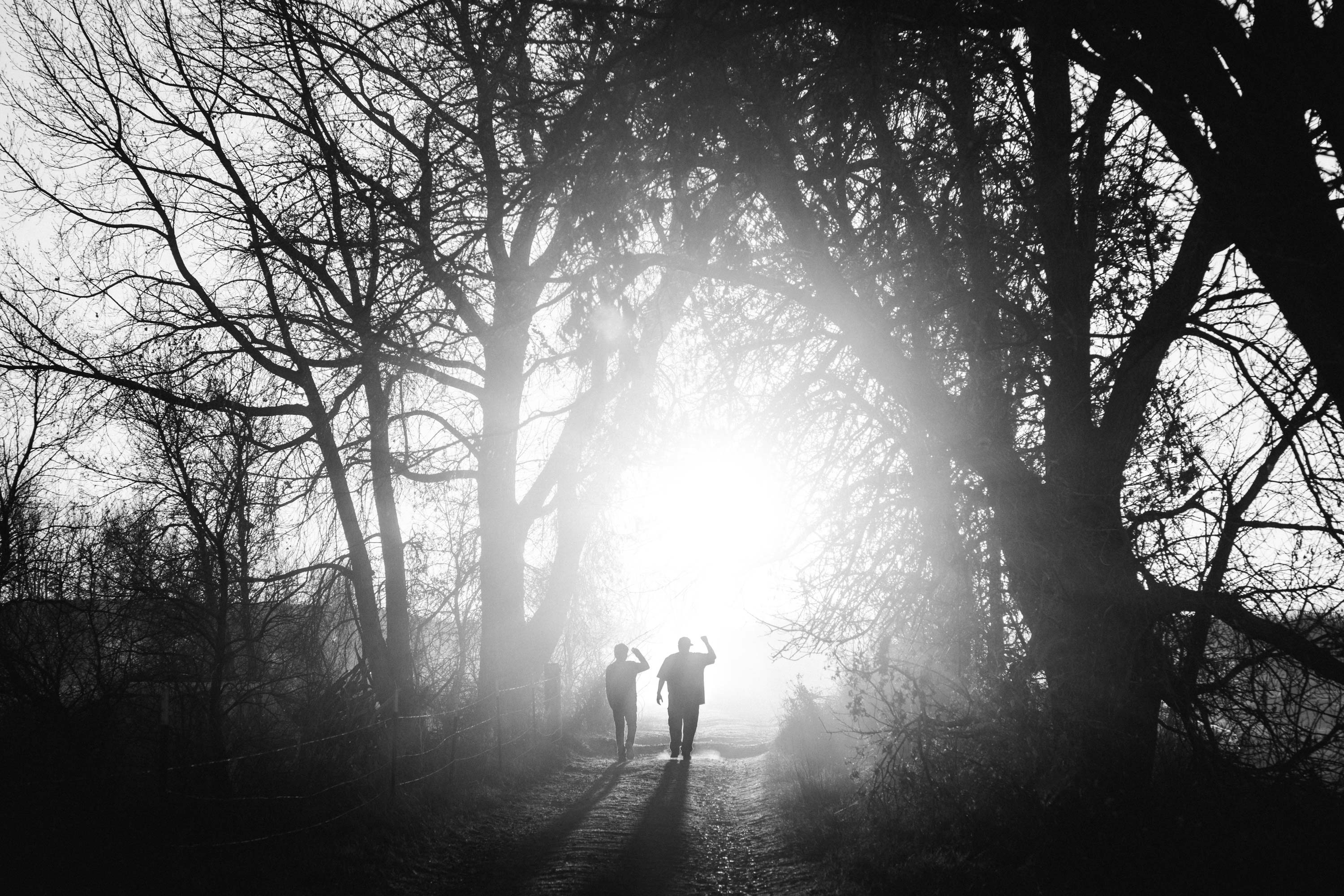
There’s still late-autumn sunlight hitting the Cannonball River as Lauren and Jasilyn head back to their tent at Rosebud Camp. The ubiquitous smell of woodsmoke is in the air, surveillance planes are droning overhead as usual, and teepees, gers and army tents with stoves built into them are being assembled and insulated for winter. The camp seems to be still growing – visits by celebrities like Mark Ruffalo and Shailene Woodley have been helping to get the word out, and every wave of arrests brings fresh publicity to the cause – but soon temperatures will start dropping to -20°C at night, with snow and biting winds. Cold-weather sleeping bags are being added to Amazon Wish Lists and a wooden kitchen is taking shape at the original Sacred Stone camp. In a few months, President Trump will take office. But no one here is talking about leaving until the pipeline is dead.
“One day I want to tell my children, ‘I loved you so much that I fought for you ’til the end,’” Jasilyn says. “When we win, people are going to know that we have power.”
The ripples created by the #NODAPL movement are already spreading, Lauren says, and the people assembled here “have already won in so many ways. We’ve already united thousands of people. Now, as a youth council, we’re already talking about sending people everywhere, fighting everywhere. If you need us, you call on the council. We’ll come, we’ll help you. We’ll stand with you. We know how it feels.” There are
already plans for youth council members to go to Brazil next year, to help indigenous people there fight against deforestation and water pollution.
“They put the call out to us and we’re willing to help,” Jasilyn says. “This is only the beginning.”
This story is featured in Huck 58 – The Offline Issue, out December 16, 2016.
Subscribe now to receive this issue before Christmas.
Enjoyed this article? Like Huck on Facebook or follow us on Twitter.
You might like

Capturing what life is really like at Mexico’s border with the USA
Border Documents — Across four years, Arturo Soto photographed life in Juárez, the city of his father’s youth, to create a portrait of urban and societal change, memory, and fluid national identity.
Written by: Miss Rosen

In search of resistance and rebellion in São Tomé & Príncipe’s street theatre culture
Tragédia — A new photobook by Nicola Lo Calzo explores the historical legacy found within the archipelago’s traditional performance art, which is rooted in centuries of colonial oppression and the resilience of people fighting against it.
Written by: Miss Rosen

As Kneecap and Bob Vylan face outcry, who really deserves to see justice?
Street Justice — Standing in for regular newsletter columnist Emma Garland, Huck’s Hard Feelings host Rob Kazandjian reflects on splatters of strange catharsis in sport and culture, while urging that the bigger picture remains at the forefront of people’s minds.
Written by: Robert Kazandjian

Alex Kazemi’s Y2K period novel reminds us that the manosphere is nothing new
New Millennium Boyz — Replete with MTV and endless band t-shirt references, the book follows three teenage boys living in 1999 USA as they descend into a pit of darkness. We spoke to its author about masculinity, the accelerated aging of teenagers, and the rebirth of subcultures in the algorithm age.
Written by: Isaac Muk

Inside New York’s underground ’60s & ’70s cruising scene
Cruising in the Shadows — For gay men in the pre-Liberation era, The Ramble in Central Park was a secretive hotspot to find love and connection. Arthur Tress was there to capture the glances, gestures and pleasures.
Written by: Miss Rosen

Inside the weird world of audio porn
Porn without pictures — Storyline-driven and ethical, imageless erotica exploded during the pandemic. Jess Thomson speaks to the creators behind the microphones.
Written by: Jess Thomson

